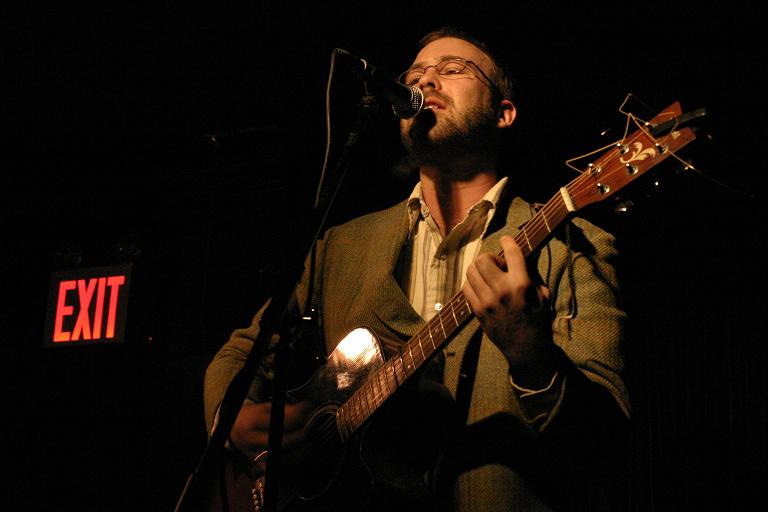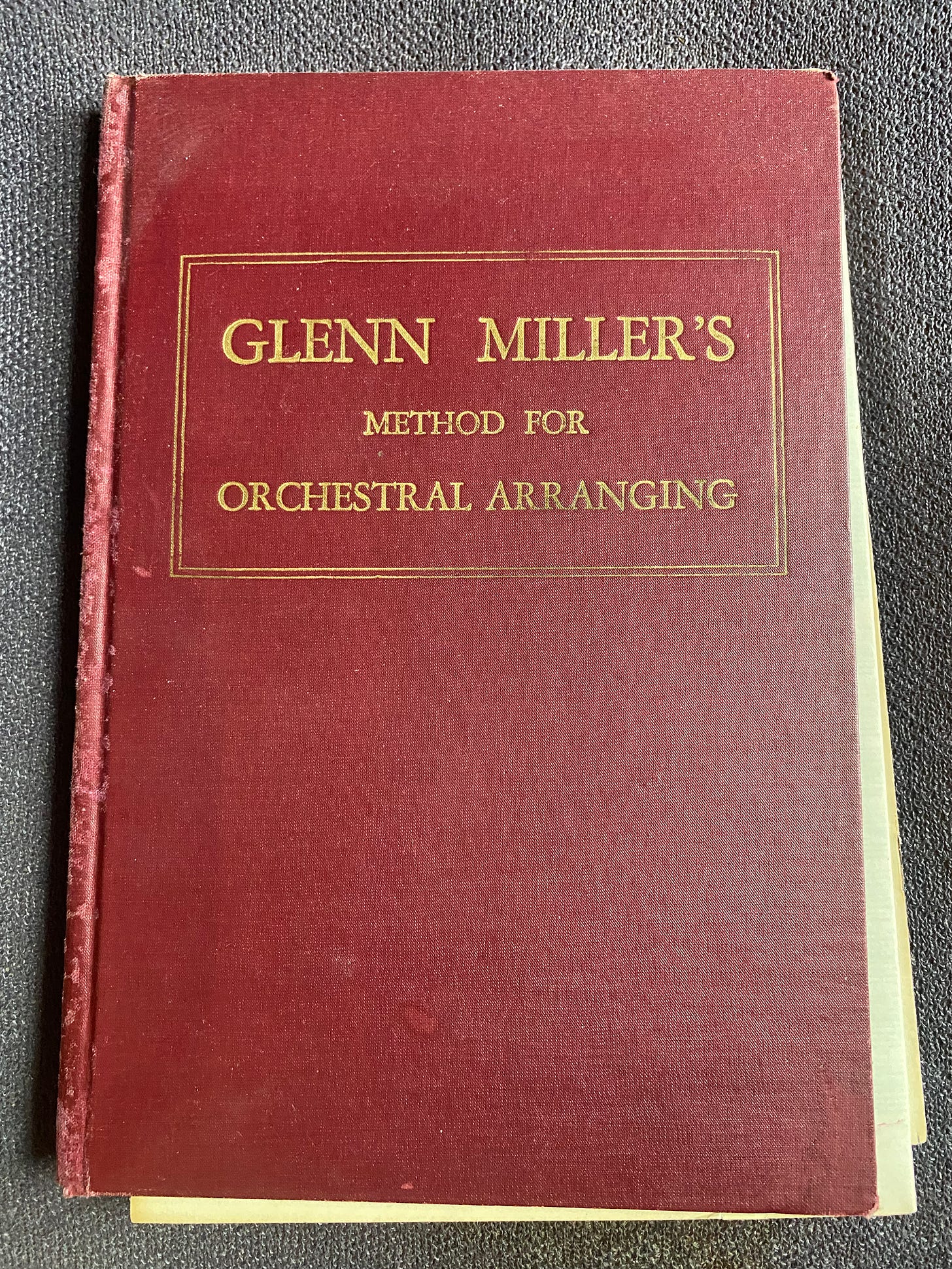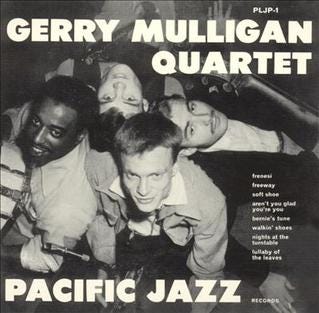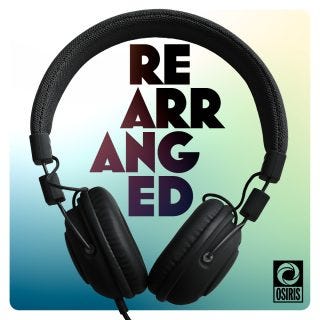Exit Signs
Gabriel Kahane's "Where are the Arms" and the power of disappearance in musical arranging
I've been sitting on some notes about Gerry Mulligan's early 1950s "west coast" quartet with Chet Baker. We'll get to that in a bit, but what prompted me to start writing today is this fascinating Gabriel Kahane essay on "the dark art of arranging,” which outlines some useful principles of arranging with classical instruments and touches on themes I explored in Rearranged, my documentary podcast about musical decision making and the nature of the song.
First, a look at the arranging in the new Kahane tune that presumably sparked his essay.
Grasping for resolution
In Rearranged, I talked about what really constitutes a "song" and what meaning can be found in the sound that adorns it. Kahane’s new orchestral arrangement of his song “Where are the Arms” illustrates the relationship between song and arrangement right out of the gate. Just four minutes and thirty-three seconds, the tune expends fifty-five seconds worth of arrangement before we hear a word.
I also talk in Rearranged about songs as places you go to, and Kahane does a great job with this on “Where are the Arms.” He establishes his setting with sparkling strings that stand our feet on the ground and tilt our heads to a night sky that blinks with little meteors of harmonics. The mixing gives us peripheral vision, with left-center plucked guitar chords slapping back in the left channel while guitar arpeggios cradle us in right-center.
The simple eight-word, eight-syllable refrain to this song appears nine times. It's the majority of the lyric, providing a tremendous center of gravity for the song and for the far-reaching sound-world that extends from it.
The lyrics are in second person, a nice way to draw in the listener. The second verse describes a "window that you now look through." So far the accompaniment has been gentle, but an assertive trill from the strings follows this line. If you hadn't noticed he was talking to you, the arrangement has now nudged you to take the first step into the song.
The refrain, “Where are the arms that armed your love?”, appears once at the end of each of the first two verses. It's a question, so far not too aggressive in the posing. And, so far, harmonization of the tune has been fairly major and straightforward.
The third verse speaks to the heart, literally (“Come on, heart”), and invokes soul with a bluesy vocal swerve punctuated by a hairy minor third from the brass. This is where he starts taking things apart. He begins to bracket the refrain, sung in a simple two-note rise and fall, with some disorienting harmonization. His previous, less brassy arrangement is less confrontational with this harmonization. In this arrangement, it accosts you: Have you answered the question? Maybe you should! A long instrumental passage after the three refrains gives you the time to do so.
Another verse, then two refrains, slightly more active in melody, again framed by provocative harmonization.
The last passage of refrains—three of them—returns to more stable harmonization, this time with a suspended chord that the strings and woodwinds lift in a crescendo that, like any good question, leaves you grasping for resolution.
Like all Americans are now, right?
The “exit”
In his essay, Kahane talks about arrangement as a "gesture" toward the melody and lyric. I like that metaphor: the arrangement communicates to you without words. It serves a function following a lyric, he says: "subtext, irony, amplification, or contradiction."
And, he shrewdly points out, it's not just the audible gesture itself that creates meaning. "Remember," he writes, "that the 'exit' of an instrument not only draws the listener's attention back to the vocal, but also creates anticipation for its return."
This reminded me of the arrival of an icy synth line in Bonnie "Prince" Billy's "Even if Love,” which I discussed in Episode 1 of Rearranged.
The synth is incongruous in a spare acoustic song, so it gets your attention. Once it has your attention, its exit creates anticipation for the next line, a line that has grown close to my heart and probably wouldn't have grabbed me if the synth hadn't drawn me to it: "And love will protect you/To the edge of the wood/Then a monster will get you/And love does no good."
Arrival and disappearance is a technique that works well outside of music, too. In what little public speaking I’ve done, the technique within closest reach has always been to introduce an absence right before I get to a point I really want to drive home. With pure speaking, that absence must be silence. I'd pause mid-sentence to create anticipation for my point.
I learned this approach in public radio. A trick I used, probably overused, was to imperceptibly fade up some bed music, then fade it out right before an important point, narrative signpost, what have you. The more dramatic I wanted to be, the quicker and more perceptibly I'd fade it out.
It's no secret that silence and space can frame your priorities in meaning and sound. The biggest lesson I took from the adventure of producing Rearranged was that my favorite arrangements use absence very intentionally. Absence makes space for the listener inside a song. And Kahane makes such great use of it in "Where are the Arms," abandoning the lyrics for long stretches after posing a question over and over.
Of course, it's musicians who make music, and only so much absence can stand. (I love that the length of "Where are the Arms" is 4:33, the same as Cage's inaudible work.) We want to do interesting things. When using arrangement as "undercurrent," as Kahane writes, "it must walk the line between musical interest and unobtrusiveness. Again, we never want to pull the listener’s ear away from the melody."
This is a lesson well taught by master arranger Glenn Miller. He wants your attention, whether to focus it on the melody or singer—or simply to make you dance—and he refuses to obscure that focus. My friend Joseph Bernstein (whose gorgeous songs I had the joy of helping him arrange on his album 1941, which I discuss in the final episode of Rearranged) once gave me a first edition of Glenn Miller's Method for Orchestral Arranging.
Miller states his method succinctly. "When the melody is sustained, move the figure and when the melody moves, the figure is sustained. Be careful not to cover the voice." The exception, he says, is when you want to force the singer to boost the volume to reach the song's climax.
"Where are the Arms" does a good job of keeping the arrangement out of the melody’s way until it’s time to push, not just in volume, but in complexity. The refrains and their increasingly assertive orchestration pile up two-thirds of the way into the song and then make their exit, focusing us once again on the question in the refrain and using a suspended chord to keep us contemplating it after the song is over.
"Bernie's Tune"
I suppose I must make my own exit and—if this has interested you at all—leave you in anticipation of my thoughts on Gerry Mulligan's "pianoless music" with Chet Baker. I'll gather my thoughts on that, and in particular "Bernie's Tune," in another post. I will leave you with this thought from Mulligan, pulled from his liner notes to his album with Baker on the Pacific Jazz label:
"To have an instrument with the tremendous capabilities of the piano reduced to the role of a crutch for the solo horn was unthinkable."
More soon! Meantime, if you haven’t listened to my Osiris Media podcast Rearranged, you can subscribe at Apple Podcasts. It's a deeply researched and personal dive into the power of musical arrangements.





